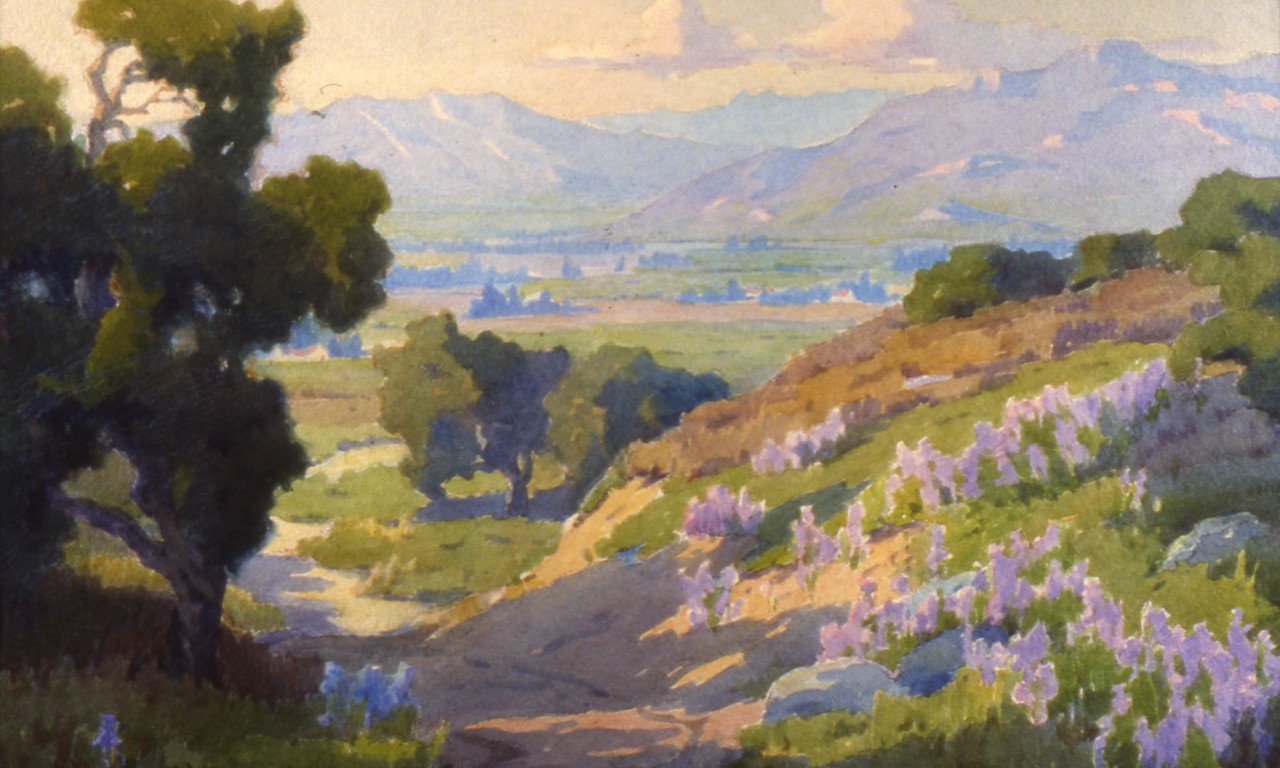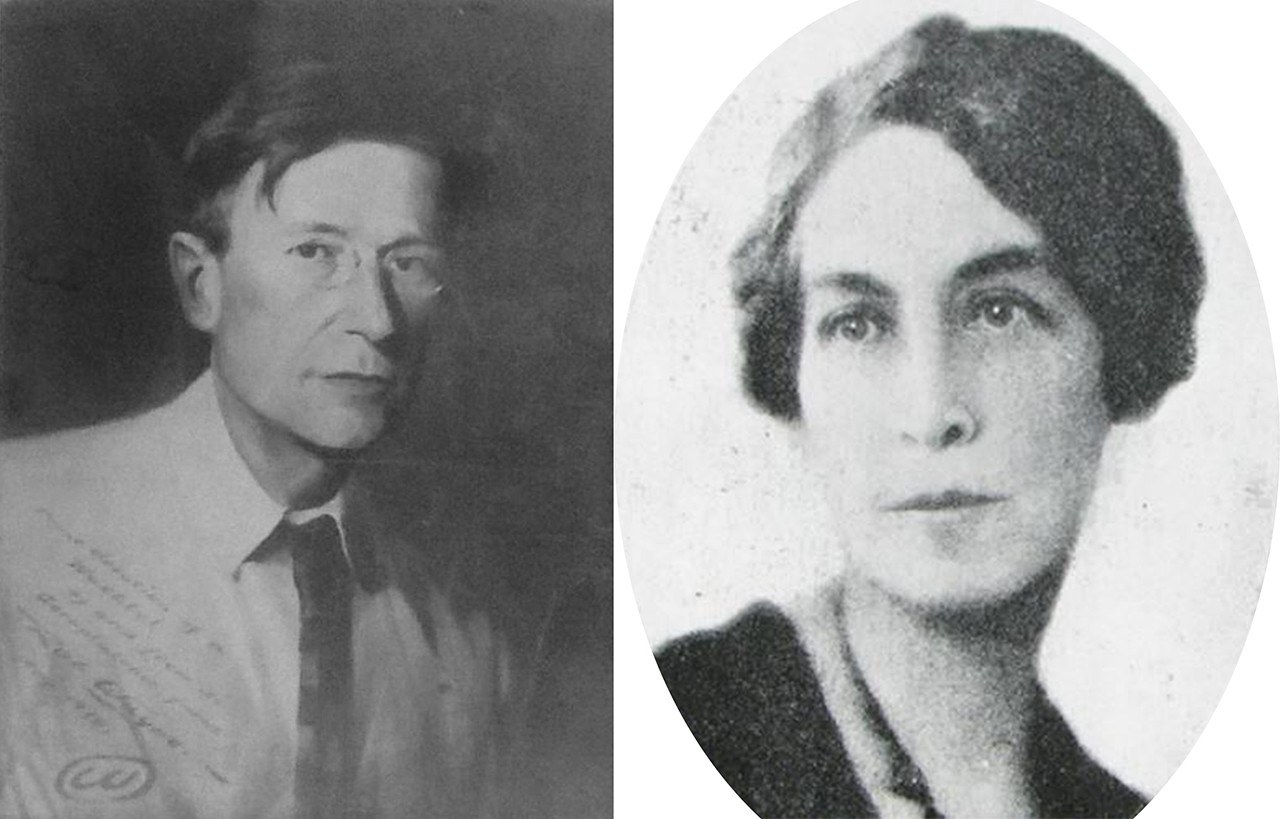2002 North Main Street
Santa Ana, California 92706
TEL: 714.567.3600
The Wachtel Watchers: The Earth in Plein Air
 |
| From Sunland Looking Across Valley to Big Tujunga, c. 1925 Marion Kavanaugh Wachtel (American, 1875-1954) Watercolor on paper; 14 x 19 9/16 in. F7690 Martha C. Stevens Memorial Art Collection |
This Little Planet Called Home
April 22, 2020 marked the 50th anniversary of the first Earth Day. Originally held as rallies and walks in major cities throughout the United States, it was organized to celebrate a planet that many felt was choking under the woes of environmental disasters, pollution, overpopulation, and perhaps the usual omnipresent threat of nuclear apocalypse. Less than a year prior, mankind had set foot on a cold, dead moon for the first time, a triumph which ironically taught us more about the importance of our brilliant sapphire and emerald home than anything. As important as the moon landing was, the Bowers Blog has previously explored how the environmental movement in the United States began long before with artists. Today’s post revisits that theme by looking at Elmer and Marion Wachtel, two California plein air painters who—while not as directly influential to environmentalism as East Coast painters—did their quiet part to share nature’s splendor with Californians.
 |
| Untitled, 1919 Elmer Wachtel (American, 1864–1929) Oil on canvas; 27 x 33 x 2 1/4 in. F7669 Martha C. Stevens Memorial Art Collection |
Sprung Forth
The Wachtels were an impressive duo, with both receiving formal training before taking to plein air painting. The older of the two, Elmer, was the first to come to California, moving there when his brother married one of Guy Rose’s sisters in 1882. There is no evidence that Elmer studied under Rose, but the connection might explain why he very suddenly transitioned from working odd jobs to pursuing a career in painting. Between 1901 and ’02, Elmer Wachtel attended art schools in New York and London. He was quick on the uptake, and immediately after returning to Los Angeles he began teaching. Marion Kavanaugh studied and later taught at the Chicago Art Institute for years before moving to California in 1903 and—taking the advice of a mentor there—taking lessons from Elmer Wachtel. However, both mostly learned that they loved each other and less than two years later the couple married. They lived and painted together for over 25 years, even going so far as to build a custom car that would better-serve their needs. In 1929, after what was by all accounts a happy life together, Elmer suddenly passed away on a painting trip.
 |
| Pine Tree in a Sierra Landscape, 20th Century Marion Kavanagh Wachtel (American, 1870-1954) Oil on canvas laid to board, 21 × 17 × 7/8 in. 2013.29.1 Gift of Darlene and Steve Coogler |
Stylish Pair
Both artists are interesting for their own individual reasons, but together formed something greater than they were by themselves. Like many who collaborate for a long time, their styles seem to have been mutually influenced by one another. Comparing Elmer’s untitled painting and Marion’s From Sunland Looking Across Valley to Big Tujunga, we can see that both rely on similar compositions with shaded foregrounds and brilliantly sun-lit backgrounds. Pine Tree in a Sierra Landscape is one of Marion’s rare oil paintings, and by comparing her high Sierra mountains to Elmer’s rolling hills, we can see that the two employed similar brushwork. A shared palette might well have been the result of having shared a palette, except that the two worked in entirely different mediums.
Separated by a Medium
While Elmer was alive the two tended to work in different mediums so as not to compete with one another. Elmer, who was very talented watercolorist, chose to paint with oils, and Marion painted exclusively in watercolor until her husband’s death. Both artists became leaders in their respective fields. Marion was a founding member of the California Water Color Society in 1921. For her unique style of using pastels to further enhance her works, she was often praised by the LA Times. Elmer Watchel is often credited as having developed many of the compositional conventions adopted by other Californian artists and was even called the father of the local landscape school.
 |
| Elmer and Marion Wachtel, 1909 and date unknown |
California Gold
The other accolade the Wachtels received is that they “[knew] Southern California perhaps more intimately than any other artist.” The two spent much of their time exploring the state in their modified car, staying at campgrounds for extended durations so that they could spend as much time as possible close to their muse: nature. Joan Irvine Smith once pointed out that sometime between California’s gold rush and the state becoming one of the world’s largest economies, its wealth was measured in terms of its natural beauty. The Wachtels’ paintings are windows in time looking back on our state’s untouched or little-touched landscape. More than anything else, the concerns that motivated Angelinos out their doors and into the streets on the first Earth Day were that the trees would die in the forests they camped in, that their backyard birds would stop chirping, and that the Eden the Watchels and others once found in California’s chaparral, the Eden that they too had fallen in love with, would irreversibly disintegrate into desert sands. The Wachtels knew it and so do you, this place is too special to let slip through our fingers.
Text and images may be under copyright. Please contact Collection Department for permission to use. References are available on request. Information subject to change upon further research.

Comments